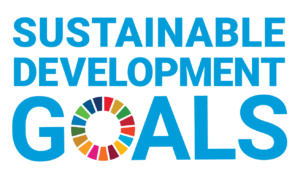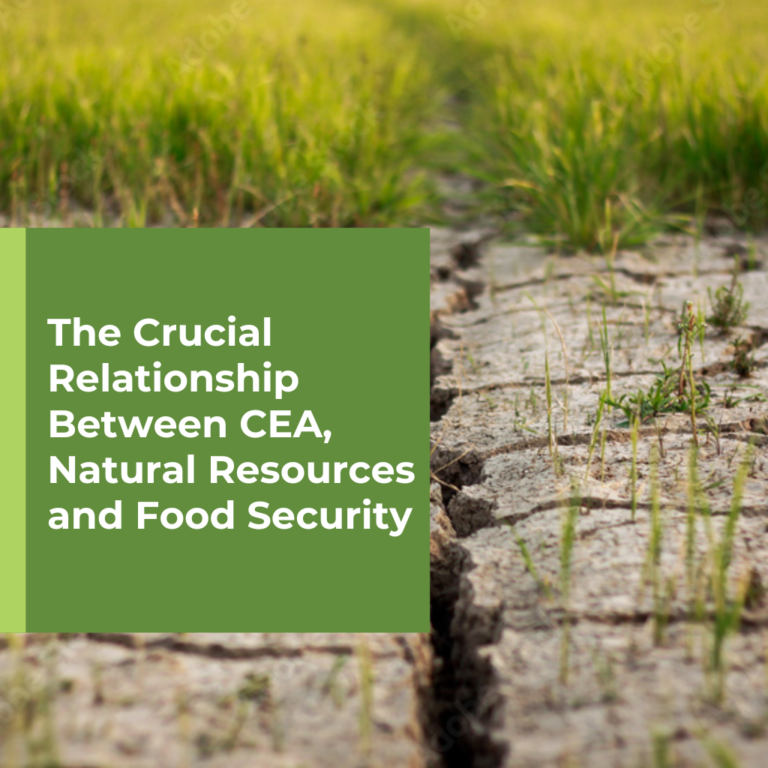
The Crucial Relationship Between Controlled Environment Agriculture, Natural Resources and Food Security
Throughout our many years of providing consulting services in the Controlled Environment Agriculture industry, CEAd’s key focus has always been to improve yield and quality while reducing operational costs. In this two-part article series, we elaborate on our vision and commitment to improving quality of life for all. We endeavour to achieve this through providing design concepts which help our clients adhere to and achieve tangible steps towards realizing the UN Sustainable Development Goals and other ESG related values.
This initial article serves as an introduction to the crucial relationship between controlled environment agriculture, natural resources, and food security. The second article will further highlight the key role innovative design plays in controlled environment agriculture by focusing on water sustainability. More specifically, how viable use of this resource achieve through targeted engineering and planning strengthens businesses and the communities they serve.
Our Vision
From the heart of CEAd’s leadership and personnel at all levels emerges our powerful vision statement:
“Sustainable production of plants as safe, affordable food and medicine for all.”
Working with a diverse array of crops, ranging from tomatoes, lettuces, and soft berries to algae, mushrooms, and more, we firmly believe that cultivating these crops within a communities “backyard” is the optimal approach to reducing costs, increasing product availability, and delivering the freshest, most nutritious produce to consumers’ tables.
At the core of our mission lies our commitment to collaborate with global horticultural partners, offering custom-engineered manufacturing and growing solutions.
Our Approach
Acknowledging the pressing global challenges of climate change, food and water insecurity, and supply chain vulnerabilities, we began addressing these issues over 35 years ago through innovative greenhouse designs and technology partnerships.
Our practical approach involves designing high-tech facilities with state-of-the-art climate controls and logistics automation, enabling our clients to minimize their use of precious resources like water, power, nutrients, and labor. This not only results in increased profitability and resilience in dynamic commodity markets.


Sustainable Development Goals
At CEAd we endorse all 17 of the UN’s Sustainable Development Goals, acknowledging the influence our services have in promoting the goals of Zero Hunger, Clean and Affordable Energy, Sustainable Cities and Communities, Economic Growth and Decent Work, Climate Action, and Life on Land.
Our Accomplishments
We work closely with our clients to ensure that our designs deliver tangible, positive outcomes. Our three decades of work are quantified by demonstrating remarkable accomplishments that speak for themselves.
For instance:
- CEAd lettuce facilities achieve 35 times greater productivity per acre compared to traditional field-grown lettuce, optimizing land use.
- CEAd vertical farm designs produce the equivalent of 40 acres of traditional farming on just 1/4 acre of growing space.
- CEAd tomato facility designs increase production by 15 times compared to field-grown produce, with over 90% of each harvest reaching the market, as opposed to the typical 40 to 60%.
- We accomplish all of this while reducing water consumption by 85% to 90% compared to traditional farming methods and minimizing energy consumption to the highest extent possible.
Notably, these adaptable facilities can be established in any climate, country, or region, furthering the reach of our mission.
CEAd is poised to bring its vision and mission to the world, propelling humanity closer to achieving the United Nations’ 2030 Agenda for Sustainable Development. Together, we can create a better, more sustainable future for all.
Learn more about CEAd, our vision, and our commitment to improving the quality of life for all.



